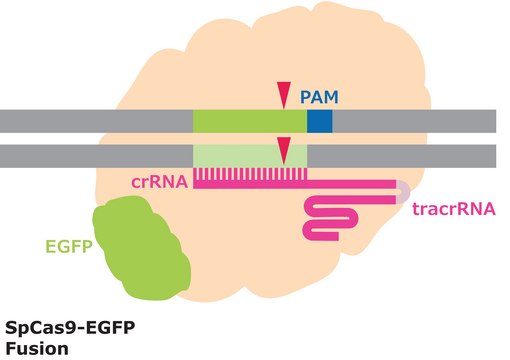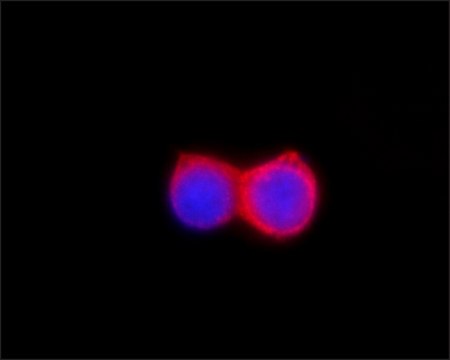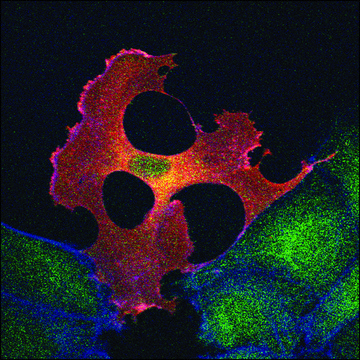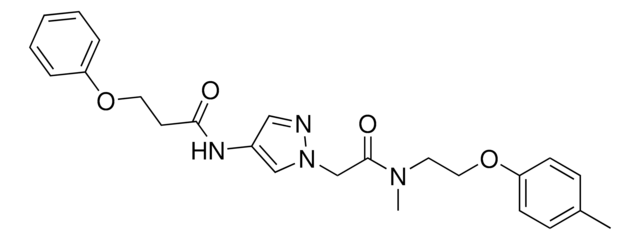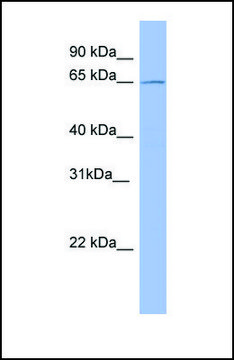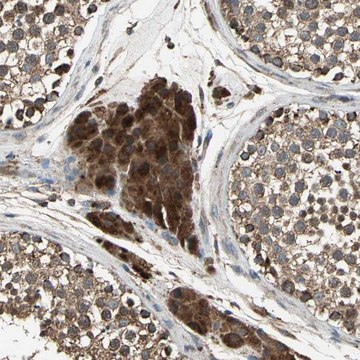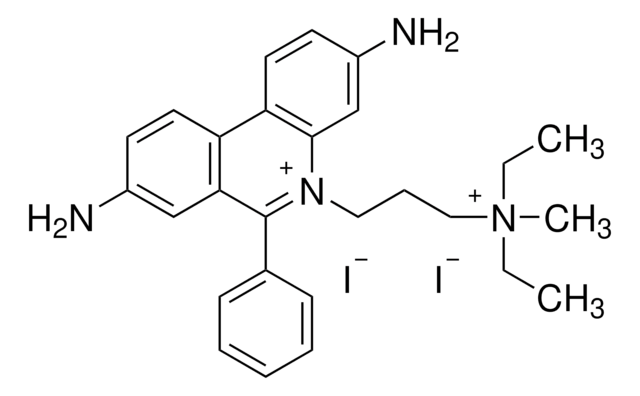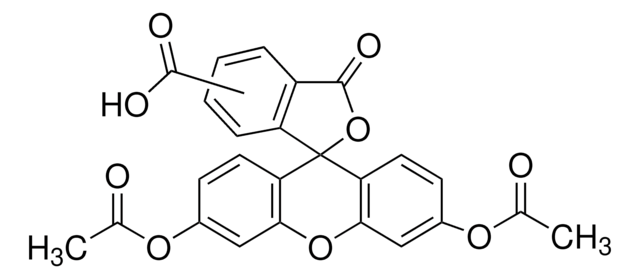推荐产品
生物来源
rabbit
质量水平
偶联物
unconjugated
抗体形式
affinity isolated antibody
抗体产品类型
primary antibodies
克隆
polyclonal
表单
buffered aqueous solution
分子量
antigen 50 kDa
种属反应性
rat, human, mouse
包装
antibody small pack of 25 μL
浓度
~1 mg/mL
技术
immunoprecipitation (IP): 1-2 μg using HeLa cell lysates.
western blot: 0.5-1 μg/mL using 3T3 or Rat1 cell extracts.
UniProt登记号
运输
dry ice
储存温度
−20°C
靶向翻译后修饰
unmodified
基因信息
human ... ETF1(2107)
mouse ... Etf1(225363)
rat ... Etf1(307503)
一般描述
Eukaryotic translation termination factor 1 (eRF1) is a protein encoded by the ETF1 gene in humans. It belongs to eRF1 family and the amino-acid sequence is highly conserved.
应用
Anti-eRF1 antibody produced in rabbit has been used in western blotting and immunoprecipitation.
生化/生理作用
Eukaryotic translation termination factor 1 (eRF1) proteins are directly implicated in the termination of translation in eukaryotes. It plays an important role in the termination of protein synthesis, which is performed by three domains (N, M and C) of eRF1. Rearrangement in eRF1 leads to N-domain accommodation into the ribosomal A site.
外形
0.01M 磷酸缓冲盐溶液,pH 7.4,含 15mM 叠氮化钠。
免责声明
Unless otherwise stated in our catalog or other company documentation accompanying the product(s), our products are intended for research use only and are not to be used for any other purpose, which includes but is not limited to, unauthorized commercial uses, in vitro diagnostic uses, ex vivo or in vivo therapeutic uses or any type of consumption or application to humans or animals.
未找到合适的产品?
试试我们的产品选型工具.
储存分类代码
10 - Combustible liquids
闪点(°F)
Not applicable
闪点(°C)
Not applicable
个人防护装备
Eyeshields, Gloves, multi-purpose combination respirator cartridge (US)
法规信息
常规特殊物品
历史批次信息供参考:
分析证书(COA)
Lot/Batch Number
Identification and characterization of a novel ubiquitous nucleolar protein `NARR?encoded by a gene overlapping the rab34 oncogene
Zougman A, et al.
Nucleic Acids Research, 39(16), 7103-7113 (2011)
Cosuppression of eukaryotic release factor 1-1 in Arabidopsis affects cell elongation and radial cell division
Petsch K, et al.
Plant Physiology, 139(1), 115-126 (2005)
Toshiaki Shigeoka et al.
Nucleic acids research, 40(14), 6887-6897 (2012-05-05)
Upf1 is a highly conserved RNA helicase essential for nonsense-mediated mRNA decay (NMD), an mRNA quality-control mechanism that degrades aberrant mRNAs harboring premature termination codons (PTCs). For the activation of NMD, UPF1 interacts first with a translation-terminating ribosome and then
L Frolova et al.
Nature, 372(6507), 701-703 (1994-12-15)
The termination of protein synthesis in ribosomes is governed by termination (stop) codons in messenger RNAs and by polypeptide chain release factors (RFs). Although the primary structure of prokaryotic RFs and yeast mitochrondrial RF is established, that of the only
NMD-degradome sequencing reveals ribosome-bound intermediates with 3'-end non-templated nucleotides.
Tatsuaki Kurosaki et al.
Nature structural & molecular biology, 25(10), 940-950 (2018-10-03)
Nonsense-mediated messenger RNA decay (NMD) controls mRNA quality and degrades physiologic mRNAs to fine-tune gene expression in changing developmental or environmental milieus. NMD requires that its targets are removed from the translating pool of mRNAs. Since the decay steps of
我们的科学家团队拥有各种研究领域经验,包括生命科学、材料科学、化学合成、色谱、分析及许多其他领域.
联系技术服务部门